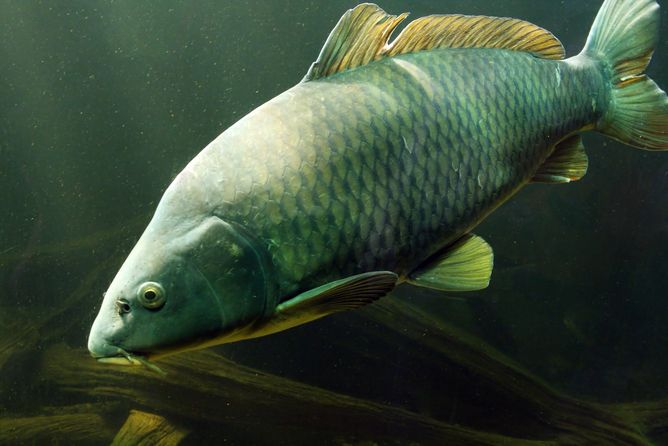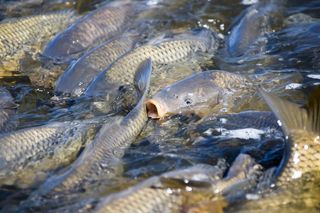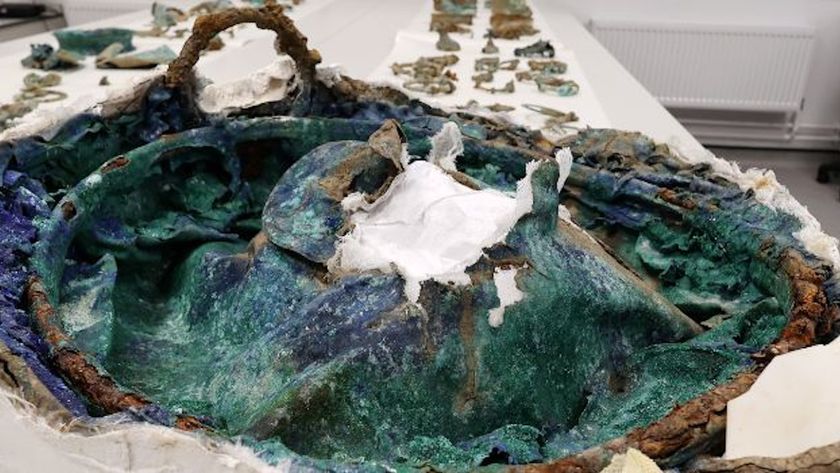
Male-only Gene Trick Could Leave Invasive Fish Species Floundering (Op-Ed)

This article was originally published at The Conversation. The publication contributed the article to Live Science's Expert Voices: Op-Ed & Insights.
A genetic modification that creates male-only populations could give us a new weapon against invasive fish such as carp that plague our waterways.
“Daughterless technology”, which works by removing females so a population can no longer breed, has previously been used to tackle mosquitoes. But new CSIRO research shows that it also works on fish.
The technology is safe and could be used to greatest effect with other forms of pest control. It might also be used to control other vertebrate pests such as cane toads.
“Rabbits of the river”
Invasive European carp have been fouling our waterways and harming our native fish populations since they were first introduced to Australia in 1859 for aquaculture purposes. They became a major pest after the accidental release of a German strain, called Boolarra after the site at which it was being farmed, in the 1960s. They spread rapidly across Australia and quickly reached huge numbers, much like rabbits and cane toads before them.
Carp are now the most abundant large freshwater fish in some parts of Australia, including most of the Murray-Darling Basin. It is no wonder they are often referred to as Australia’s “river rabbits”.
So far, carp control has mainly involved commercial fishing or poisoning. While these options may reduce carp numbers, and poisoning may occasionally eradicate them from isolated areas, other options are being explored for more widespread control.
Sign up for the Live Science daily newsletter now
Get the world’s most fascinating discoveries delivered straight to your inbox.
One notable success was at Lake Crescent in Tasmania, where carp were eradicated using a combination of control methods, including barrier mesh and traps to reduce breeding and capture the fish, and pesticides to kill unhatched embryos. The project also used high-tech tactics, such as “Judas carp” implanted with radio transmitters to locate clusters of fish, and a pheromone “lure” odour to attract and capture mature adults.
The daughterless technology being developed by CSIRO could be a useful weapon to add to this arsenal.

Testing on zebrafish
To find out if daughterless technology works on vertebrates, we tested it on zebrafish. We chose them because they are small, have a short generation time, and are closely related to several invasive carp species.
Daughterless technology involves modifying the genes of male fish. The modification is specific to a particular fish species, and there is an extremely low chance of it spreading to other species.
When the genetic change is inherited by female fish it reduces either their fertility or survival. The result is that females become more and more rare in the population, eventually driving the pest species to extinction.
In our trial, we managed to create a 100% male zebrafish population. Without any females, the group is doomed to die out.
Eradicating carp
The technology is now being tested on carp, at specialist facilities at Auburn University in Alabama. Getting results will take longer than it did for zebrafish, as carp take more time to reach sexual maturity and the technology needs to be tested through several generations.
However, the preliminary results are promising – in fact it looks like it works even better in carp than in zebrafish.
This type of genetic modification has several advantages. The modified genes are spread through the population by the males, which are not themselves affected, and only through natural breeding events. As carp do not breed with any native Australian species, the risk of the technology affecting anything other than the targeted pest is extremely low.
Once our research is complete, our results will be evaluated by government regulatory bodies including the Office of the Gene Technology Regulator. We will also continue to consult widely with conservation groups, recreational fishers and resource managers, as we have done throughout our research.
Combining pest control
Daughterless technology alone can eradicate pests. But it is much more effective when combined with other control strategies, such as the use of pesticides, disruption of spawning activities, fishing, or the use of biological control (biocontrol) agents such as viruses.
In developing future plans for carp control, we could also learn from past successful biocontrol programs for other vertebrates such as rabbits, which were brought under control with the aid of the mixomatosis virus.
CSIRO and the Invasive Animals Cooperative Research Centre are now investigating the Koi herpes virus (KHV), which could be a useful species-specific agent to target carp, and a valuable tool to use alongside the genetic technology.
KHV has affected carp populations in the United States, Israel, Europe and China. Having not yet presented in Australia, KHV may prove to be hugely effective if managed and implemented correctly.
Researchers at CSIRO’s Australian Animal Health Laboratory are now testing KHV to ensure it will be safe and effective, before its possible release.
Rivers free from carp?
Can we look forward to a future where our rivers are free from carp, and many of our native fish are potentially returned from the brink of extinction?
That depends on research, careful and controlled field trials, consultation with the Australian public, and scrutiny by government bodies, particularly the Office of the Gene Technology Regulator.
Nonetheless, this research is an exciting step towards gaining the upper hand over carp and other pests.
CSIRO would like to acknowledge the funding agencies that have supported this research, including: Murray Darling Basin Authority, Lower Murray Catchment Management Authority, Auburn University, and the Invasive Animals Cooperative Research Centre.
This research was supported by the Murray Darling Basin Authority through the Invasive Animals Cooperative Research Centre, and the Lower Murray Catchment Management Authority.
This article was originally published on The Conversation. Read the original article. Follow all of the Expert Voices issues and debates — and become part of the discussion — on Facebook, Twitter and Google +. The views expressed are those of the author and do not necessarily reflect the views of the publisher. This version of the article was originally published on Live Science.











